Tire and Wheel Removal and Installation Front
Removal Procedure
- Raise the vehicle until the tire clears the floor. Support the vehicle. Refer to Lifting and Jacking the Vehicle in General Information.
- Remove the wheel nuts.
- Remove the wheel from the hub.
Caution: To avoid eye injury, use approved safety lenses, goggles, or face shield to prevent eye injury when deflating tires.
Important: When removing and demounting any tire and wheel assembly, deflate the tire by removing the valve core. Perform this procedure before removing the tire assembly from the vehicle.
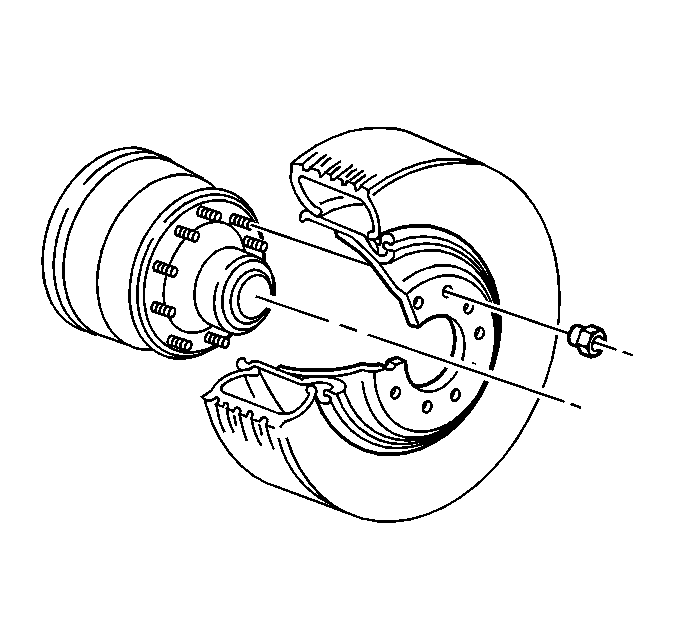
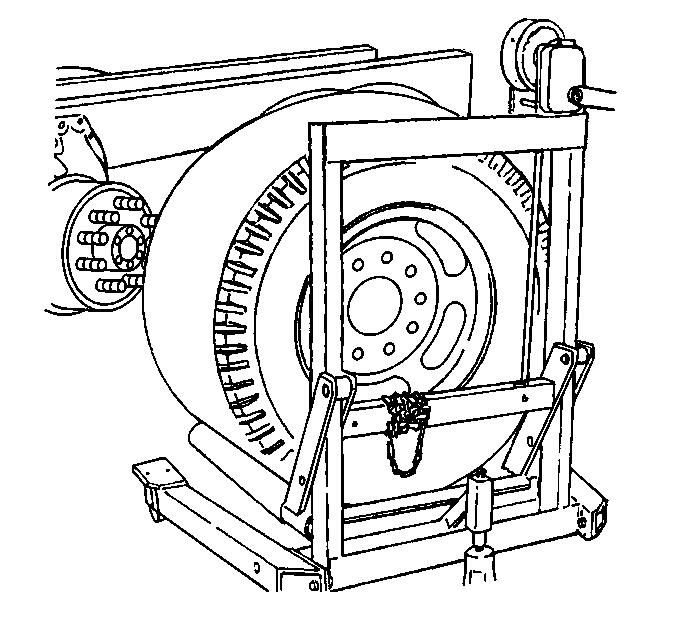
Installation Procedure
- Apply a thin coat of grease to the hub pads in order to prevent corrosion.
- Turn the hub in order to position the hub pad at a 12 o'clock position.
- Install the wheel on the hub.
- For 8-hole wheels, install the wheel nuts.
- For 10-hole wheels, install the wheel nuts.

Notice: Wheel hub flanges, wheel studs, and stud nuts should be free of rust, lubricants, dirt, and finish color paint on all contact surfaces to ensure proper torque retention.

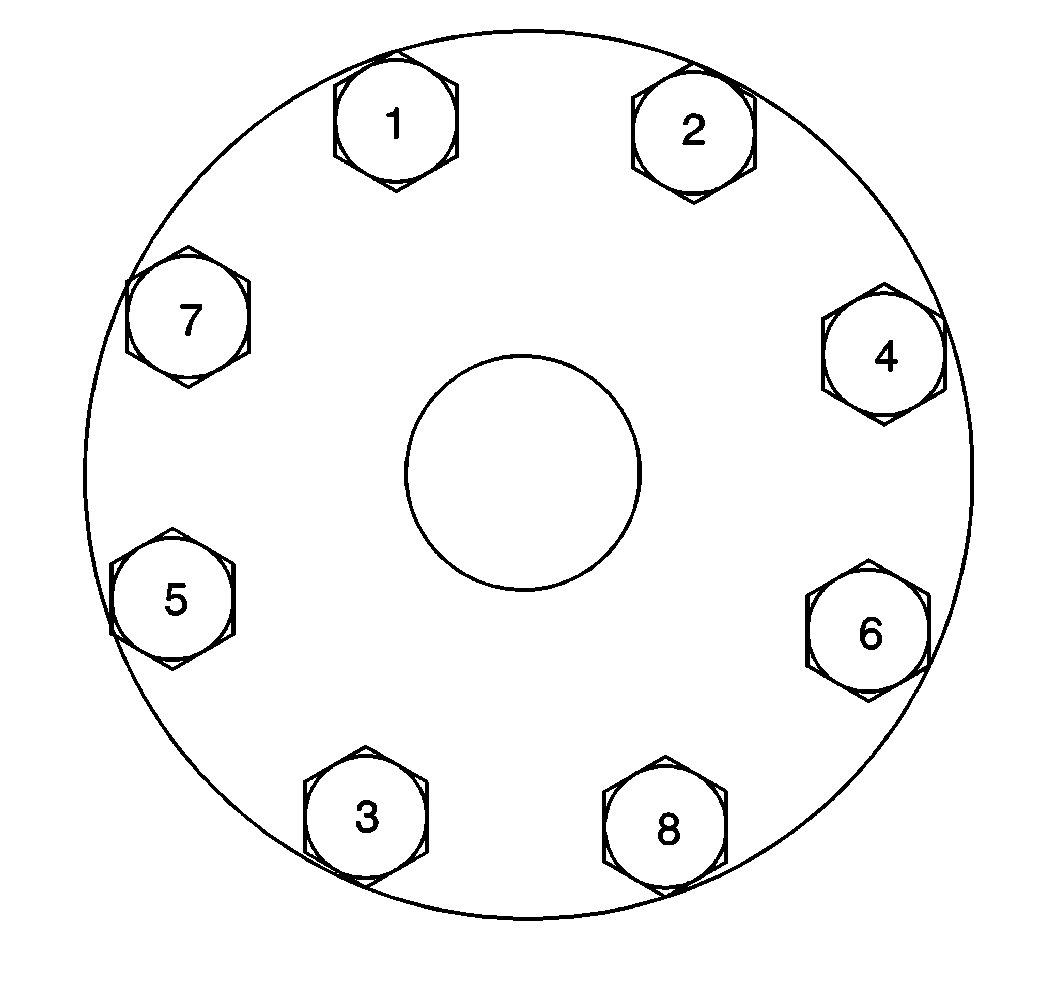
Notice: Use the correct fastener in the correct location. Replacement fasteners must be the correct part number for that application. Fasteners requiring replacement or fasteners requiring the use of thread locking compound or sealant are identified in the service procedure. Do not use paints, lubricants, or corrosion inhibitors on fasteners or fastener joint surfaces unless specified. These coatings affect fastener torque and joint clamping force and may damage the fastener. Use the correct tightening sequence and specifications when installing fasteners in order to avoid damage to parts and systems.
Important: Tighten the wheel nuts progressively using the first specification; then retighten the nuts using the second specification.
Tighten
| • | Tighten the wheel nuts to 100 N·m (74 lb ft) in the sequence shown. |
| • | Tighten the wheel nuts to 520-580 N·m (383-427 lb ft) in the sequence shown. |
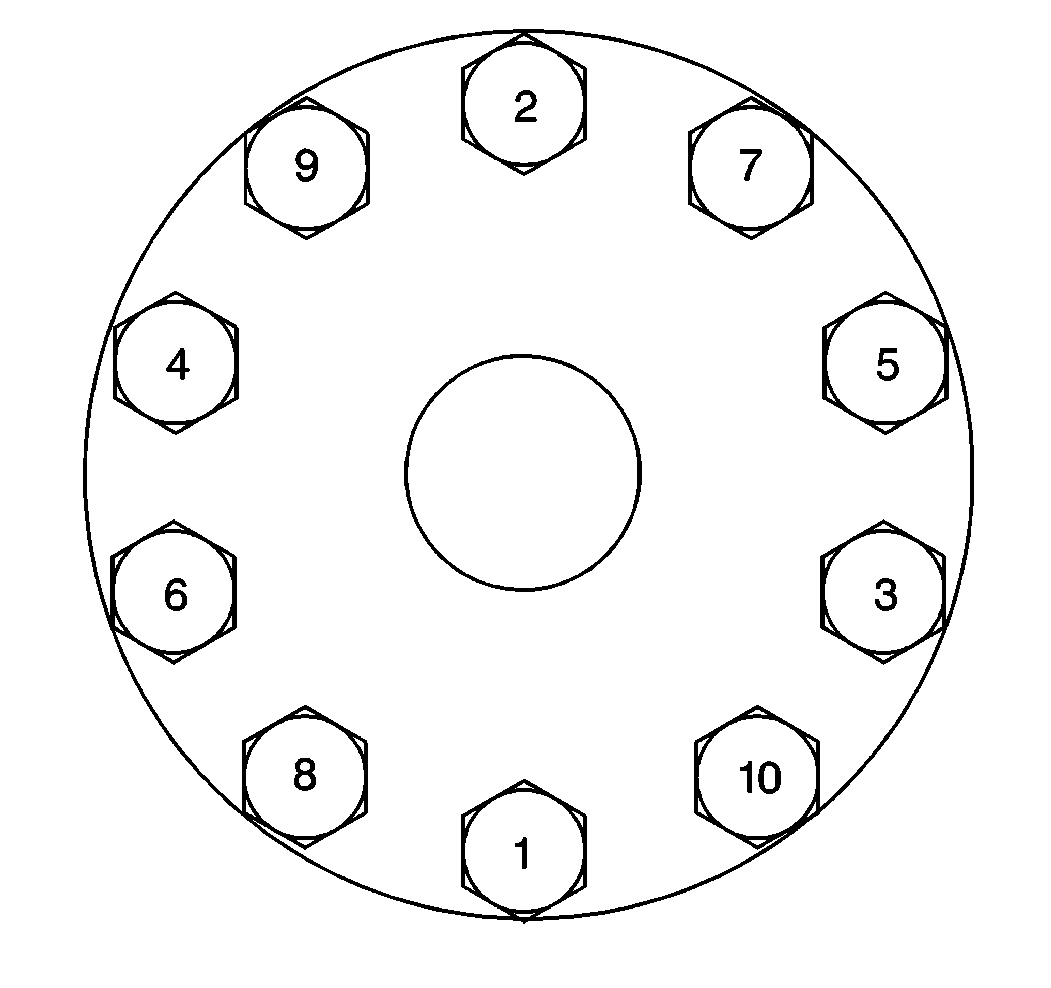
Tighten
| • | Tighten the wheel nuts to 225 N·m (166 lb ft) in the sequence shown. |
| • | Tighten the wheel nuts to 610-678 N·m (450-500 lb ft) in the sequence shown. |
Tire and Wheel Removal and Installation Dual/Rear
Removal Procedure
- Break the wheel nuts loose.
- Raise the vehicle until the tire clears the floor. Support the
vehicle. Refer to
Notice: When jacking or lifting a vehicle at prescribed lift points, be certain that lift pads do not contact the exhaust system, brake pipes, cables, fuel lines or under body. Such contact may result in damage or unsatisfactory vehicle performance.
in General Information. - Remove the wheel nuts.
- Remove the wheel from the hub. Refer to Wheels Description.
- If applicable, remove the stud nuts from the inner wheel.
- If applicable, remove the inner wheel from the hub.
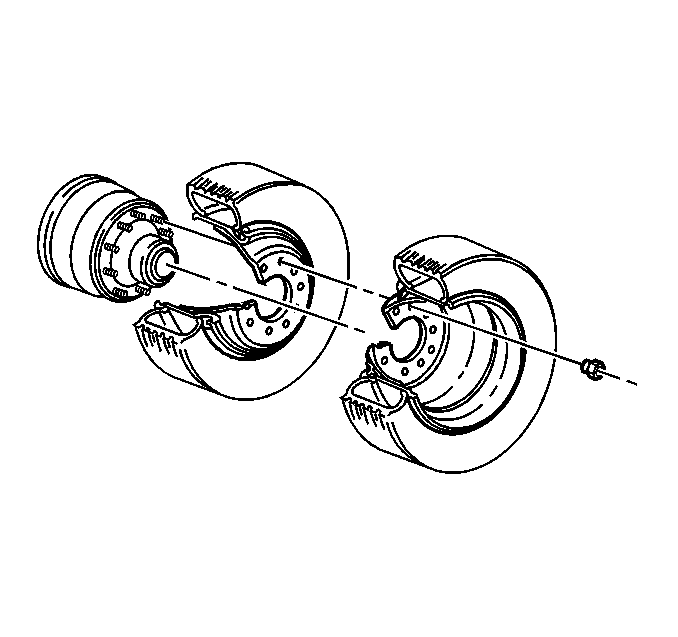
Caution: To avoid eye injury, use approved safety lenses, goggles, or face shield to prevent eye injury when deflating tires.
Notice: Wheel hub flanges, wheel studs, and stud nuts should be free of rust, lubricants, dirt, and finish color paint on all contact surfaces to ensure proper torque retention.
Important: When removing and demounting any tire and wheel assembly, deflate the tire by removing the valve core. Perform this procedure before removing the tire assembly from the vehicle.
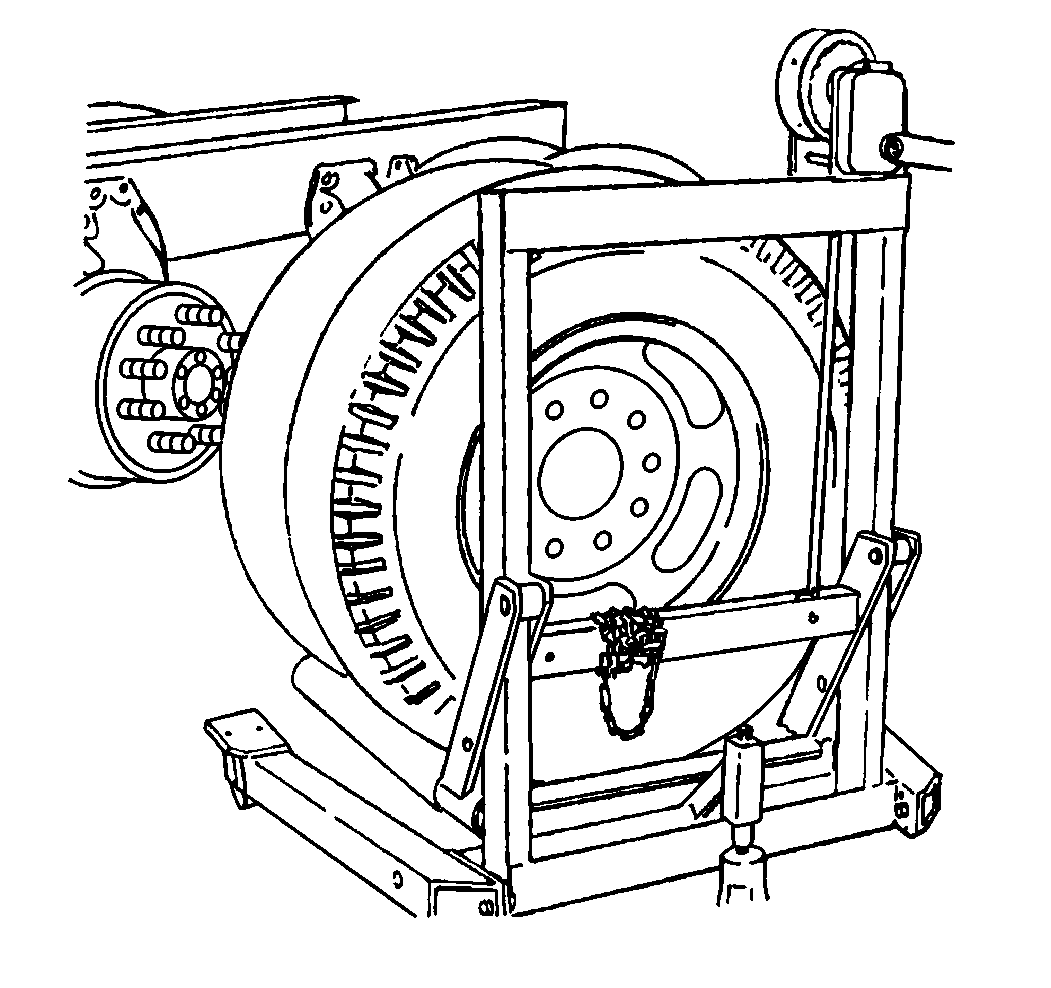
Installation Procedure
- Apply a thin coat of grease to the hub pads in order to prevent corrosion.
- Turn the hub in order to position the hub pad at a 12 o'clock position.
- Install the wheel on the hub.
- Install the inner wheel on the hub.
- Install the outer wheel on the hub with the valve stems of both wheels positioned as close to 180 degrees as possible.
- For 8-hole wheels, install the wheel nuts.
- For 10-hole wheels, install the wheel nuts.

Notice: Wheel hub flanges, wheel studs, and stud nuts should be free of rust, lubricants, dirt, and finish color paint on all contact surfaces to ensure proper torque retention.

Important: Perform steps 4 and 5 for dual wheel applications only. For single wheel applications, proceed to step 6.

Notice: Use the correct fastener in the correct location. Replacement fasteners must be the correct part number for that application. Fasteners requiring replacement or fasteners requiring the use of thread locking compound or sealant are identified in the service procedure. Do not use paints, lubricants, or corrosion inhibitors on fasteners or fastener joint surfaces unless specified. These coatings affect fastener torque and joint clamping force and may damage the fastener. Use the correct tightening sequence and specifications when installing fasteners in order to avoid damage to parts and systems.
Important: Tighten the wheel nuts progressively using the first specification; then retighten the nuts using the second specification.
Tighten
| • | Tighten the wheel nuts to 100 N·m (74 lb ft) in the sequence shown. |
| • | Tighten the wheel nuts to 520-580 N·m (383-427 lb ft) in the sequence shown. |

Tighten
| • | Tighten the wheel nuts to 225 N·m (166 lb ft) in the sequence shown. |
| • | Tighten the wheel nuts to 610-678 N·m (450-500 lb ft) in the sequence shown. |
